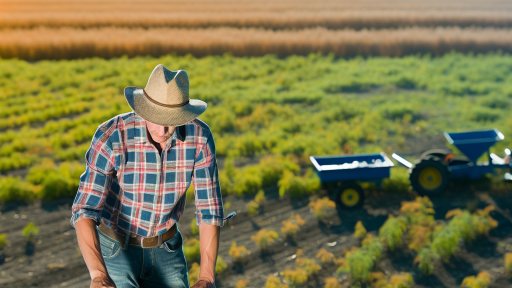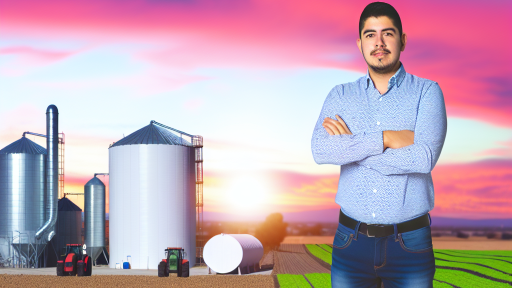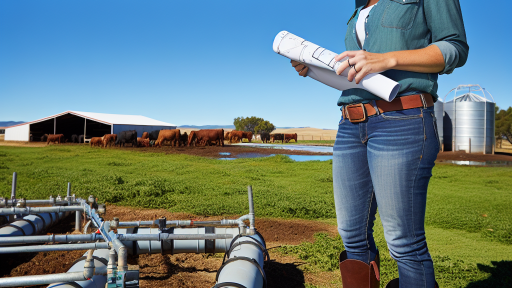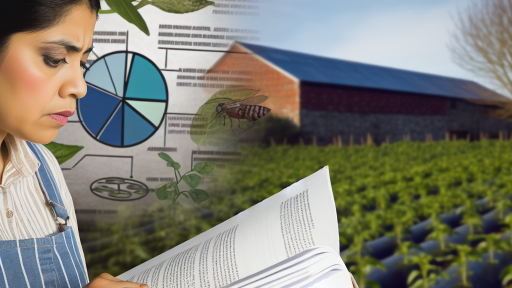Overview of Zero-Waste Farming
Zero-waste farming refers to agricultural practices that aim to eliminate waste.
This approach promotes sustainability and environmental health.
Moreover, it encourages the efficient use of resources.
Definition of Zero-Waste Farming
Zero-waste farming focuses on reusing and recycling all materials.
This method minimizes pollution and resource consumption.
Furthermore, it incorporates practices for soil health and biodiversity.
Importance of Zero-Waste Farming
This farming model addresses critical environmental challenges.
For instance, it helps combat climate change by reducing emissions.
Additionally, it can improve food security in local communities.
Farmers can enhance their resilience against market fluctuations.
Furthermore, adopting these practices can strengthen sustainable economies.
Assessing Current Waste Management Practices on the Farm
Evaluating Existing Waste Practices
Begin by documenting all waste generated on the farm.
This includes organic, plastic, and other types of waste.
Next, categorize the waste into its respective streams.
Understanding where the waste comes from helps identify improvement areas.
Transform Your Agribusiness
Unlock your farm's potential with expert advice tailored to your needs. Get actionable steps that drive real results.
Get StartedIdentifying Waste Reduction Opportunities
Examine current waste disposal methods in place.
Look for inefficient practices that may lead to unnecessary waste.
Engage with farm employees for insights on waste generation.
Conduct surveys to gather information about waste handling.
Implementing Best Practices
Create a waste management plan that promotes reduction and reuse.
Incorporate composting as a primary strategy for organic waste.
Consider recycling options for plastic and metal materials.
Educate staff on proper waste segregation techniques.
Monitoring and Evaluating Progress
Set specific goals for waste reduction initiatives.
Regularly review waste data to assess progress.
Adapt strategies based on findings to improve efficiency.
Celebrate milestones to keep motivation high among staff.
Creating a Waste Reduction Plan
Setting Goals
Begin by defining your waste reduction goals.
Make these goals specific, measurable, achievable, relevant, and time-bound.
For example, aim to reduce waste by 50% within two years.
This provides a clear target for your farm’s waste management efforts.
Identifying Current Waste Sources
Next, assess your farm’s existing waste sources.
Conduct a thorough audit of all waste produced on-site.
Common sources include packaging, crops, and livestock waste.
Understanding where waste originates helps you address each area effectively.
Engaging the Team
Involve your farm team in the waste reduction process.
Encourage them to share their insights and experiences.
Collaboration fosters a collective responsibility towards sustainability.
Regular team meetings can keep everyone informed and motivated.
Showcase Your Farming Business
Publish your professional farming services profile on our blog for a one-time fee of $200 and reach a dedicated audience of farmers and agribusiness owners.
Publish Your ProfileImplementing Waste Reduction Strategies
Once you’ve set goals, focus on actionable strategies.
Consider composting organic waste to enrich soil quality.
Explore biodegradable packaging options to minimize plastic use.
Additionally, implement recycling programs for non-biodegradable materials.
Monitoring Progress
Continually monitor your waste reduction progress.
Regular assessments allow adjustments to your strategies.
Set checkpoints to review data and evaluate success.
This helps maintain momentum and encourages ongoing improvements.
Celebrating Achievements
Finally, celebrate milestones in your waste reduction efforts.
Acknowledge the team’s hard work and progress.
Recognition boosts morale and encourages further engagement.
Use these achievements to inspire ongoing commitment to sustainability.
Explore Further: Promoting Pollinators for Healthier Crops
Implementing Composting Systems for Organic Waste
Understanding Composting
Composting transforms organic waste into a valuable resource.
This process enriches soil and supports plant growth.
Moreover, it reduces the amount of waste sent to landfills.
Benefits of Composting
Composting offers multiple environmental benefits.
It enhances soil structure and fertility.
Furthermore, it helps retain moisture in the soil.
Compost also acts as a natural pest deterrent.
Types of Composting Systems
Various composting systems exist to suit different needs.
- Bokashi composting involves fermenting organic waste.
- Vermicomposting uses worms to break down organic material.
- Hot composting accelerates the decomposition process.
- Cold composting requires less maintenance and is slower.
Setting Up a Composting System
Follow these steps to establish your composting system.
First, choose a suitable location for your compost bin.
Ensure it receives adequate sunlight and is easily accessible.
Next, select the right compost bin based on your needs.
There are options like tumblers and stationary bins.
Composting Materials
Use a mix of green and brown materials for successful composting.
- Greens include kitchen scraps and grass clippings.
- Browns comprise dry leaves and cardboard.
Avoid adding meats, dairy, or oils to the compost.
These materials attract pests and create odors.
Maintaining Your Compost
Regular maintenance is crucial to successful composting.
Turn your compost every few weeks to aerate it.
Monitor the moisture level; it should feel like a damp sponge.
If it becomes too dry, add water or greens to the mix.
Utilizing Finished Compost
Once compost is ready, utilize it effectively in your garden.
Spread it over garden beds to improve soil quality.
Mix it into potting soil for container plants.
Use it as a top dressing for lawns to enrich grass health.
Explore Further: Integrating Native Species on Your Farm
Utilizing Permaculture Principles to Enhance Resource Efficiency
Understanding Permaculture Basics
Permaculture is a holistic design approach for sustainable living.
It encourages working with nature instead of against it.
Showcase Your Farming Business
Publish your professional farming services profile on our blog for a one-time fee of $200 and reach a dedicated audience of farmers and agribusiness owners.
Publish Your ProfileThis method integrates land, water, plants, and animals.
Utilizing permaculture creates a balanced ecosystem.
Creating Effective Microclimates
Microclimates enhance resource efficiency on a farm.
Strategically placing plants can protect them from harsh conditions.
For instance, taller plants can provide shade for vulnerable crops.
Additionally, using windbreaks can reduce evaporation from soil.
Building Soil Health
Healthy soil forms the foundation of effective farming.
Use cover crops to prevent erosion and build organic matter.
Composting enriches soil with nutrients and enhances microbial activity.
Furthermore, practicing crop rotation maintains soil fertility.
Implementing Water Management Techniques
Effective water management is crucial for a zero-waste farm.
Create swales to capture and retain rainwater in the landscape.
Construct ponds to provide habitat while storing water resources.
Additionally, rainwater harvesting systems reduce dependency on external sources.
Composting and Waste Reduction
Composting minimizes waste and enriches the farm ecosystem.
Consider setting up bins for kitchen scraps and farm waste.
Encourage the community to participate in composting programs.
This approach transforms waste into a valuable resource.
Enhancing Biodiversity
Promoting biodiversity strengthens farm resilience.
Plant a variety of crops to attract beneficial insects.
Integrate native plants to support local wildlife and pollinators.
Moreover, diversity helps combat pests and disease naturally.
Collaboration with Local Ecosystem
Aligning farming practices with local ecosystem dynamics is essential.
Engage in partnerships with nearby farms and organizations.
Sharing resources and knowledge fosters a stronger agricultural community.
Ultimately, collaboration enhances sustainability for all involved.
Uncover the Details: Soil Health and Carbon Sequestration Techniques
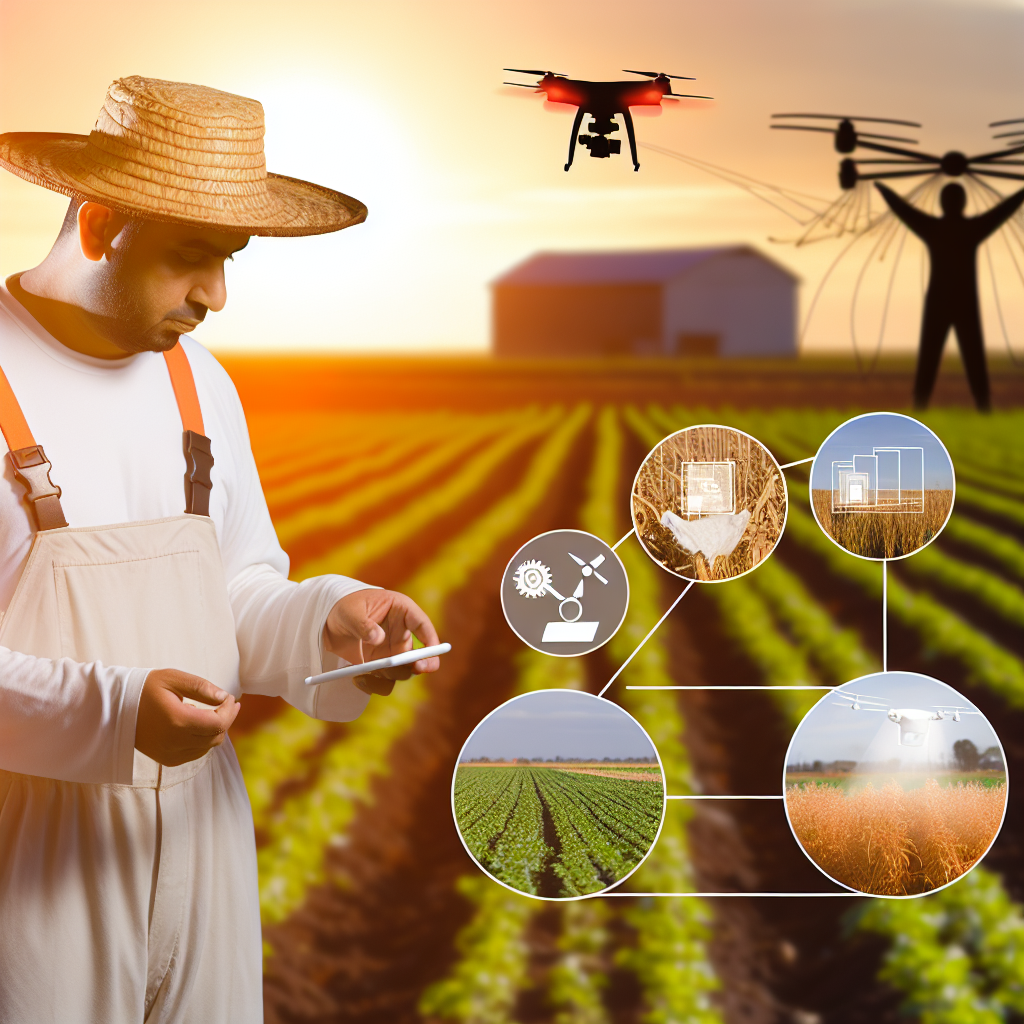
Integrating Livestock for Nutrient Cycling and Waste Management
Benefits of Livestock Integration
Integrating livestock into your farm promotes a closed-loop system.
This approach reduces waste and enhances nutrient cycling.
Livestock waste serves as valuable fertilizer for crops.
Furthermore, animals can help manage pests and weeds naturally.
They also contribute to soil health through their natural behaviors.
Choosing the Right Livestock
Selecting livestock depends on your farm’s specific needs.
Chickens are excellent for pest control and provide eggs.
Pigs help clear land and transfer nutrients to the soil.
Cattle enrich the soil with their manure and grazing habits.
Diverse species can balance the farm ecosystem effectively.
Implementing Sustainable Waste Management Practices
Implementing composting systems maximizes nutrient use from waste.
Build compost bins close to animal areas for convenience.
Regularly turn the compost to encourage decomposition.
Showcase Your Farming Business
Publish your professional farming services profile on our blog for a one-time fee of $200 and reach a dedicated audience of farmers and agribusiness owners.
Publish Your ProfileIntegrate crop residues into the compost to enhance nutrient content.
Creating Rotational Grazing Systems
Rotational grazing practices can enhance pasture health.
Move livestock between grazing areas to prevent overgrazing.
This practice helps maintain soil structure and nutrient levels.
Additionally, it boosts plant diversity and resilience.
Monitoring and Adapting to Farm Needs
Regular monitoring of livestock health is crucial to waste management.
Keep track of manure output to adjust fertilizer needs accordingly.
Adjust feeding practices to minimize waste generation.
Adapting to changing conditions ensures sustainable practices continue.
Delve into the Subject: Benefits of Integrated Pest Management in Farming
Innovative Technologies and Tools for Zero-Waste Farming
Smart Irrigation Systems
Smart irrigation systems enhance water efficiency in farming.
These systems utilize sensors to monitor soil moisture levels.
As a result, farmers can reduce water waste significantly.
Moreover, automated scheduling optimizes watering times.
This technology adapts to real-time weather conditions as well.
Precision Agriculture Tools
Precision agriculture tools use data analytics to optimize farm operations.
GPS technology allows for accurate mapping of fields.
Farmers can identify problem areas needing attention.
Additionally, drones offer aerial insights to improve crop yield.
Consequently, this leads to reduced input costs and waste.
Composting Solutions
Composting transforms organic waste into valuable fertilizer.
Farmers can create a closed-loop system with compost bins.
Furthermore, this process enriches soil health naturally.
It reduces the need for chemical fertilizers significantly.
By utilizing compost, farms can cut down on waste production.
Vertical Farming Techniques
Vertical farming maximizes space efficiency and reduces waste.
By growing crops in stacked layers, farmers optimize land use.
This method minimizes transportation emissions as well.
Indoor vertical farms can recycle water and nutrients effectively.
As a result, crop yields can increase substantially over time.
Waste-to-Energy Systems
Waste-to-energy systems convert agricultural waste into energy.
These systems utilize anaerobic digestion for methane production.
This renewable energy can power farm operations sustainably.
Additionally, leftover materials can serve as nutrient-rich fertilizers.
Thus, farms can operate with minimal environmental impact.
Community Engagement and Education: Building a Support Network
Importance of Community Involvement
Community involvement is essential for a successful zero-waste farm.
It fosters collaboration and encourages resource sharing.
Moreover, it enhances local knowledge and skills.
Creating a Support System
Building a support system starts with identifying key stakeholders.
Engage local farmers, schools, and environmental organizations.
Showcase Your Farming Business
Publish your professional farming services profile on our blog for a one-time fee of $200 and reach a dedicated audience of farmers and agribusiness owners.
Publish Your ProfileCollaboration strengthens community ties and shares valuable resources.
Organizing Workshops and Events
Workshops and events can educate the community about sustainability.
Offer hands-on activities like composting or gardening classes.
Invite local experts to share their knowledge and experience.
Utilizing Social Media Platforms
Social media platforms are effective for outreach and communication.
Share updates, resources, and success stories through these channels.
Engage the community by encouraging feedback and participation.
Building Partnerships with Local Businesses
Forming partnerships with local businesses can increase support.
Encourage them to adopt sustainable practices within their operations.
Collaborate on joint initiatives that promote zero-waste principles.
Involving Schools and Educational Institutions
Engaging schools can inspire the next generation of sustainable farmers.
Create educational programs that integrate zero-waste concepts.
Organize school visits to your farm to foster hands-on learning experiences.
Collecting and Sharing Success Stories
Share success stories to motivate and inspire community members.
Highlight personal journeys and the impact of sustainable practices.
This builds momentum for broader community engagement and action.
Additional Resources
What is regenerative agriculture and how can it help us get to net …

